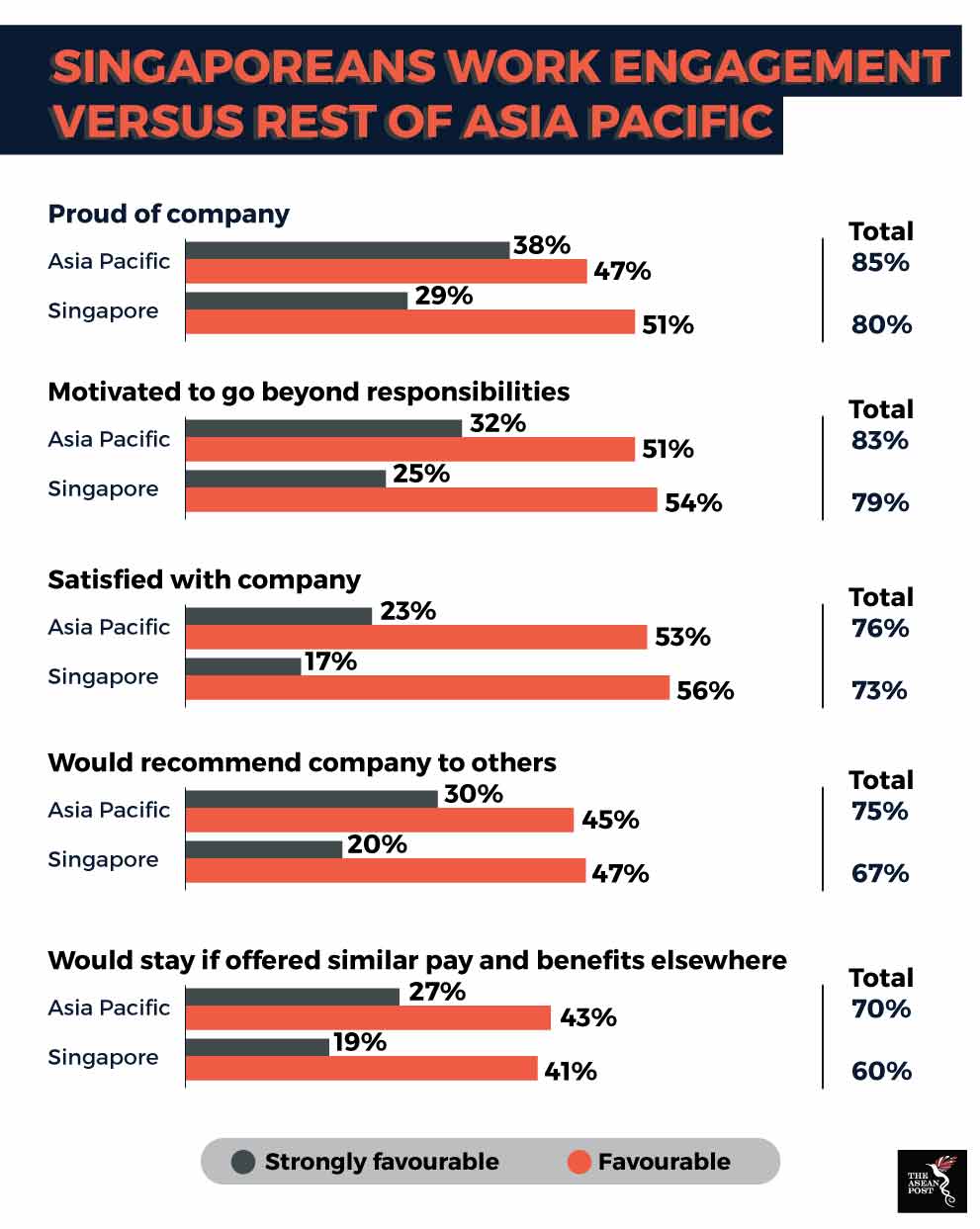Global consulting leader, Mercer’s recent Singapore Employee Engagement Index 2018 made startling conclusions in its report on the city-state when it placed Singapore in second last place for work engagement in the Asia Pacific region. While 72 percent is not at all low, it still causes concern as employees in countries like Indonesia, Philippines, and Vietnam all enjoy a much higher engagement rate of 82 percent.
On top of that, and perhaps even more worrying, is it seems that Singaporeans are less likely to endorse their organisations as good employers. The index found that only 67 percent of employees in Singapore are willing to advocate for their companies as good places to work in, compared to the regional average of 76 percent.
In fact, only a small portion of those who were engaged are motivated to go above and beyond their scope of work and help their companies thrive. This, too, shows a stark difference in strongly favourable responses between employees in the Asia Pacific region, at 32 percent, and Singapore, at 25 percent.

Harder tasks
An earlier study showed that one of the keys to increasing happiness among Singaporean employees may be to give them harder tasks.
At the beginning of the year, Southeast Asia's largest online employment company, JobStreet.com shared the results of its Job Happiness Index 2017 in a press statement. According to the index, 45 percent of Singaporeans were unhappy at work, while 55 percent expressed that they were either neutral about or happy at work.
Chew Siew Mee, country manager of JobStreet.com Singapore, commented on the main factors that lead to job unhappiness, saying that when career trajectories stagnate, employees do not derive any form of satisfaction and may begin to resent their jobs.
“To retain outstanding performers, there is a need to give them new challenges and more high-level responsibilities so that they can grow their skillsets,” she said.
Besides that, transport subsidies, workplace flexibility, salary increments, and additional job perks were suggested as ways to increase Singaporean employees’ happiness levels at work.
Meanwhile, Peta Latimer, CEO of Mercer in Singapore, said many employees find the culture of their organisations limiting and that they’re unable to fully express themselves even though they may feel a sense of pride in working there.
“Companies must foster a culture of empowerment, one where every employee feels included and appreciated,” he said.
Easier said than done
Considering that even Singapore’s government has acknowledged that Small Medium Enterprises (SMEs) make up 99 percent of all enterprises in the country and employ 65 percent of all workers, it may be wise to consider how SMEs in particular could help their workers clock out with a smile. An immediate solution to job happiness may be to increase salaries, the practicality of such a move is a little more complicated.
According to William Hofmann, a senior research analyst at ValueChampion in Singapore, 42 percent of SMEs last year reported that increasing business costs like labour had significantly harmed their business.
Hofmann, who was previously an economic consultant at Industrial Economics Inc., in referring to numbers from the Department of Statistics for 2013 to 2017 found that businesses in Singapore have faced higher costs as wages have continually grown faster than inflation.
“This has squeezed their margins, while the average value added per firm has decreased, making it more difficult to operate a profitable enterprise,” he explained.
While new and upcoming technologies will enable SMEs to run more effectively and efficiently at a lower cost, it wouldn’t be financially prudent to put additional profits into employees’ salaries just to make them happier. A fair wage is a fair wage and higher salaries should be earned. This, however, does not excuse employers from finding new ways to motivate their employees enough to make them want to earn higher salaries. It will take creative approaches to find and provide those sources of motivation but with findings and data like the ones from Mercer and JobStreet, half the work for employers is already done.
This article was first published by The ASEAN Post on 26 October 2018 and has been updated to reflect the latest data.
Related articles:
